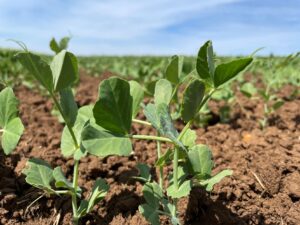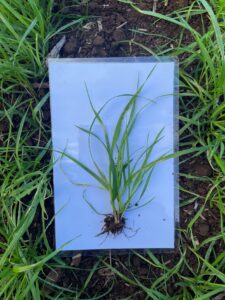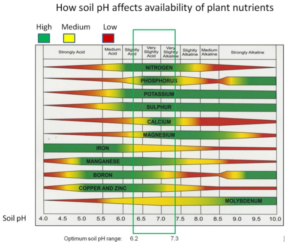
As the cost of farming rises, profitability also needs to rise. It’s perhaps more important than ever to use all possible resources available to try to increase yields. It’s vital to know what will grow best in your field, and what seeds to plant to increase your soil health and fertility. Did you know that an inoculated red clover stand can add up to 200lbs of nitrogen per acre, lowering your fertilizer costs? Or that each 1% increase in soil organic matter helps hold 20,000 gallons more water per acre? Soil analyses provide nutrient and soil pH information while tracking trends on your land. These trends, high or low, can greatly affect your yield and plant health.

Soil testing is a simple, low-cost investment to gain highly valuable information. You need all the information you can get when making management decisions. The data collected can help you choose crop rotations and develop nutrient plans for a minimal cost.
When sampling, you’ll want to take a representative sample of an area at the same time each year. This means collecting soil from “good “and “bad” areas to get an average for analysis.

Reading and understanding a soil test can seem a little overwhelming at first. Luckily, there are many great public resources to help you through the process. We’ve listed some below. You can ask the soil lab to offer recommendations or you can call us at Ioka to see which seeds could help amend your soil!
An example of one of the items you’ll see on a soil test is the pH level. Think of pH like a key that can open the nutrient door. Soil pH affects how much of the other nutrients (such as nitrogen, phosphorus, and potassium) are available to the plant. In turn, this affects the forage quality and further, animal health. Soil pH affects all the other nutrients within the soil. Applying lime will increase a low pH, while adding fertilizer reduces the pH. Finding the correct balance is key.
Healthy soil is the foundation of productive, sustainable agriculture. The best way to create and maintain healthy soil is to follow as closely as you can to the Six Soil Health Principles:
- Minimize Disturbance by
- Limit tillage
- Optimize chemical input
- Rotate livestock
- Maximize Soil Cover by
- Planting cover crops
- Use mulch
- Leave plant residue
- Maximize Biodiversity by
- Planting diverse cover crops
- Use diverse crop rotations
- Integrate livestock
- Maximize Presence of Living Roots by
- Reducing fallow
- Planting cover crops
- Use diverse crop rotations
- Maximize Organic Matter
- Adding compost to increase soil organic matter
- Minimize Chemicals & Synthetics by
- Planting beneficial plant species
- Reducing fallow
- Increasing plant diversity
The best thing to see in a field is your shadow, so get out there a take closer look at what is going on.
Here are some additional resources to help you understand how to maximize your soil:
A Guide to Collecting Soil Samples for Farms and Gardens
https://catalog.extension.oregonstate.edu/ec628
Analytical Laboratories Serving Oregon
https://catalog.extension.oregonstate.edu/em8677
Soil Test Interpretation Guide
https://catalog.extension.oregonstate.edu/ec1478
Principles to Improve Soil Health


